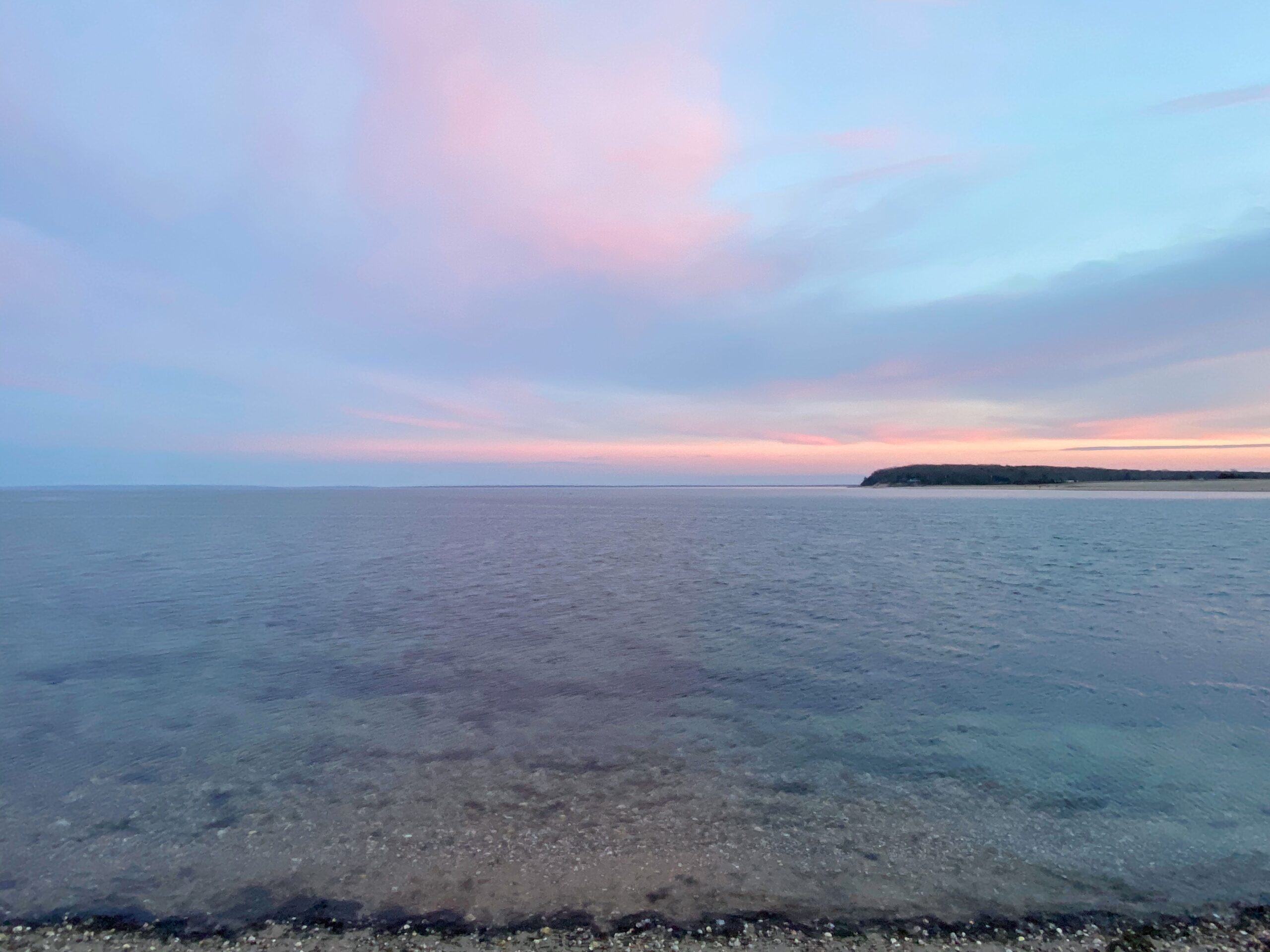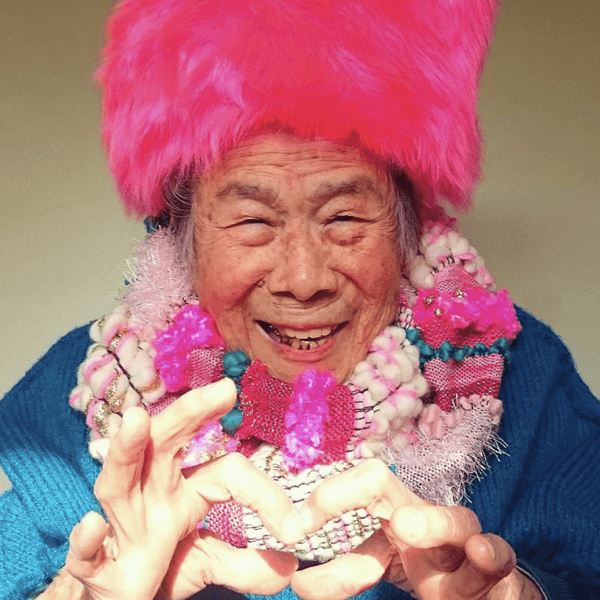The Power of Dreams
Do you choose a word or phrase at the start of a new year? I don’t do it every year, but when I do, I like how a singular idea can act as a throughline, bringing me back to what’s important. In 2016, my words were wild and free, and that was the year I left IDEO to finish writing Joyful. In 2018, I was craving connection after two hermetic years hunkered down with my books and research. That was the year I spoke at TED, and I began to speak professionally and meet thousands of joyseekers and joymakers at events and online. These words aren’t magical, but they offer a kind of unconscious reinforcement. When given the choice to go home or stay for an extra conversation, in a year of connection my choice was clear. And by the end of the year, all those small decisions felt like they added up to something.
This year, I chose a phrase: BIG DREAMS. As I was doing my end-of-year reflection in December, I began to realize that many of the dreams I had nurtured for a long time had finally come to fruition. In particular, Graham’s birth, after such a long struggle with infertility, felt like the truest definition of “dream come true.” And with Joyful well and truly out in the world after ten years of research, it felt like many things that once seemed like uncertain glimmers in the distance were now an integral part of my reality.
For the first time in years, my life didn’t have an obvious trajectory. I wasn’t pushing to achieve something. I wasn’t trying to overcome long odds. I was out of my comfort zone, for sure, figuring out how to care for a newborn in the middle of a pandemic, but the challenge was simply to stay afloat, not swim to some far off shore. I felt incredibly present in my life, but also a bit aimless. It wasn’t that I wanted the kind of single-minded drive that has defined these last few years. But I did want some horizons to gaze at, some hazy lighthouses in the fog that might pique my curiosity beyond the day-to-day. What was missing? Dreams.
Our culture puts a lot of weight on goals and plans, but dreams are often an afterthought. They’re not as purposeful, and rarely yield a profit. But dreams are powerful because they mark out a space in which to create joy. When we dream, it’s as if we are sketching shapes on a piece of paper, and as we live our lives we color them in, giving them form and texture. We take detours, we color outside the lines. Sometimes we discover a new path entirely. But the sketch was what got us started, created a landscape out of the blank page for us to explore.
In my 5 Secrets to Designing a Joyful Home workshop this week, I shared an exercise to help cultivate dreams for your home. (There’s still one session left, so I’m not going to spoil it for those attending by describing it here, but we do have a few more spots if you’d like to join and try it for yourself!) A friend picked up on the words that I use to describe this exercise, and shared them, which made me reflect on them a little more closely: The gap between your fantasies and your reality holds rich potential for joy.
It’s not that our dreams will necessarily come true in the way we imagine. But rather that dreams connect us to deeper longings that we don’t always listen to in the shuffle of daily life — and honoring those longings can be a way to create joy in life right now. For example, maybe you find yourself constantly perusing English cottages on Instagram, but you live in an urban high rise. Perhaps you don’t need to move to the Cotswolds, but a beautiful teapot and a Liberty print tablecloth might bring a piece of that dream into the present.
Or maybe you fantasize about being an artist, but you work in accounting, and you’re afraid to start painting because you worry you might not be good at it, or you’re too late to start. But an hour with some watercolors on the weekend is worthwhile — not because it will necessarily result in you achieving the dream, but because it creates an aperture for joy in the present moment. Maybe you will eventually quit your job and be a celebrated painter, like Mirdidingkingathi Juwarnda Sally Gabori, who didn’t pick up a paintbrush until she was 81. Maybe you’ll be a weekend hobbyist, and look back grateful for the quiet hours you spent making landscapes or painting portraits of your loved ones. Maybe you’ll discover you actually hate painting, but love calligraphy, which you never would’ve discovered otherwise.
Why don’t we dream more? One reason is that dreams can be scary. If we let ourselves imagine a life we might want, we have to acknowledge the possibility that we might not attain it. We expose ourselves to disappointment, and that’s a vulnerable place to be. In the same way that we temper our expectations to avoid feeling let down, avoiding big dreams protects us from the pain of a dream that doesn’t come true.
Perhaps we also worry that dreaming big is a betrayal of our present life. It’s as if we believe wanting more is a sign of dissatisfaction, an indication that what we have isn’t enough. We don’t have a very comfortable relationship with wanting in American culture. The veneration of capitalism has turned our common spaces into monuments to desire, constantly telling us that we should want more. At the same time, wanting is also viewed as unseemly, ungrateful, desperate. To want is to lack, and we’re not supposed to lack. We’re supposed to be enough, or at least appear to be.
Yet neuroscientists who study pleasure see wanting as the first part of a motivational loop that culminates in learning. Desire motivates us toward a reward. If the reward is pleasurable, we learn that it was worth the effort. If it was a letdown, we focus our energies elsewhere. Wanting, biologically speaking, is a source of motivation that expands our world. Outside the framework of consumption, wanting can be hunger for growth, a desire to make the most of our one chance to traverse this earth. We can dream big and want more, while also being deeply in love with our lives right now. Instead of seeing these ideas as in conflict with each other, we can choose to see our dreams as a well of inspiration for our present joy.
When we become consumed with reality, and fail to nourish our fantasies, our lives shrink. It’s easy to end up feeling lost or stuck. Lacking that connection to our own desires, we often turn outward for inspiration, but this can lead us to compare our lives to others. The most inspiring people I see out in the world are the ones living out their own dreams, and seeing them do this can make us feel an urge to keep up. But there’s no way to keep up with someone else’s dreams. The only ones that truly matter are our own.
The activity of daydreaming is often maligned as purposeless, indulgent, or a distraction. But I’ve come to see dreams as a tool for expanding our perspective and illuminating possibilities. And while it might seem crazy for me to suggest dreaming during a time of so much difficulty, when many are struggling just to get by, I believe dreams are more important now than ever. Between the physical confinement of being home all the time and the curtailing of our daily activities, the past year has felt like a reduction of life to its sparest essence. Dreaming is free, and freeing, and I think we could all use a little of both right now.
The pandemic will eventually end, and we’ll be able to expand out again once more. But in which direction? Will we just go back to the lives we were living? Or can this be an opportunity to remake our lives, our homes, our selves in ways we could never have imagined before this?
For me, this activity of dreaming involves journaling, a lot of long, wandering “What if?” conversations with Albert, flipping through coffee table books about different kinds of homes, and leaving half an hour on my calendar every week purely for dreaming. Other practices that might be helpful are sketching, morning pages, free writing, or visualization. Or simply staring up at the clouds on a clear day, letting your mind venture where it wants. The past year has taken great discipline from all of us, and the joy of dreaming is that it invites us to do the opposite: let down our guard, be soft not hard, and venture without constraints into a beautiful unknown.
If your dreams for this year include creating a home you love, you’ll be happy to know that the Design a Joyful Home course is open! (And we’ve added some incredible new bonuses!) Get all the details and enroll here. Enrollment ends February 9th, 2021, so if you’re considering it, don’t delay!






Discussion (1 Comment)
I think the sentence that most spoke to me is this one…”we can dream big and want more while also being deeply in love with our lives right now.” I have become a lover of the word “and” currently. It just seems to work in my life. Making room in my life for dreaming as helped me stave off some of my depression, anxiety and help feel somehow more in control. All by doing similar things to you…journaling, conversations with my husband, and making time to be inspired.
Thank you for putting words to the feelings.